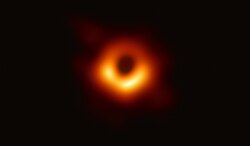 168P/Hergenrother during its 2012 outburst as imaged from the Mount Lemmon Observatory | |
| Discovery [1] | |
|---|---|
| Discovered by | Carl W. Hergenrother |
| Discovery site | Catalina Sky Survey |
| Discovery date | 22 November 1998 |
| Designations | |
| P/1998 W2, P/2005 N2 | |
| Orbital characteristics [2] [3] | |
| Epoch | 25 February 2023 (JD 2460000.5) |
| Observation arc | 21.12 years |
| Earliest precovery date | 21 November 1998 |
| Number of observations | 3,631 |
| Aphelion | 5.817 AU |
| Perihelion | 1.357 AU |
| Semi-major axis | 3.587 AU |
| Eccentricity | 0.62169 |
| Orbital period | 6.794 years |
| Inclination | 21.615° |
| 355.43° | |
| Argument of periapsis | 15.041° |
| Mean anomaly | 188.01° |
| Last perihelion | 5 August 2019 |
| Next perihelion | 18 May 2026 |
| TJupiter | 2.663 |
| Earth MOID | 0.420 AU |
| Jupiter MOID | 0.001 AU |
| Physical characteristics [2] | |
Mean diameter | 0.91 km (0.57 mi) [4] |
| Comet total magnitude (M1) | 7.0 |
| Comet nuclear magnitude (M2) | 15.2 |
| 8.0 (2012 apparition) | |
168P/Hergenrother is a periodic comet in the Solar System. The comet, originally named P/1998 W2, returned in 2005 and got the temporary name P/2005 N2. [5] It was last observed in January 2020 [3] and may have continued fragmenting after the 2012 outburst.





